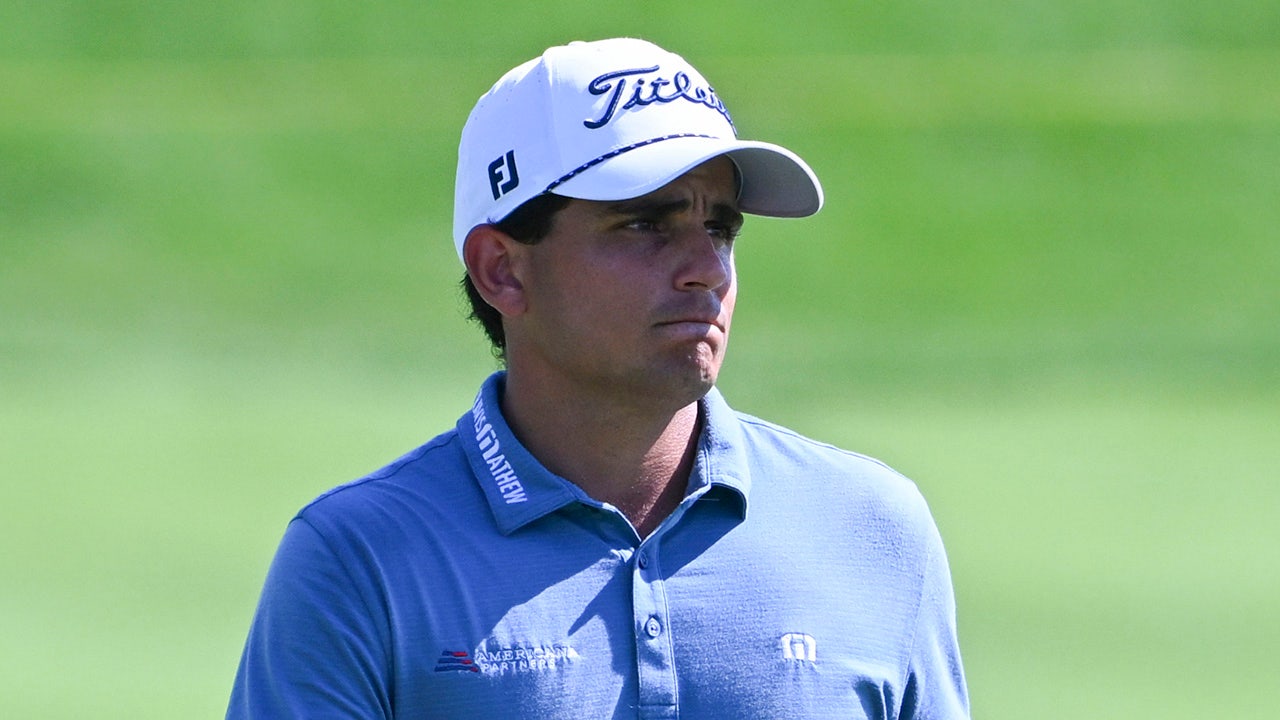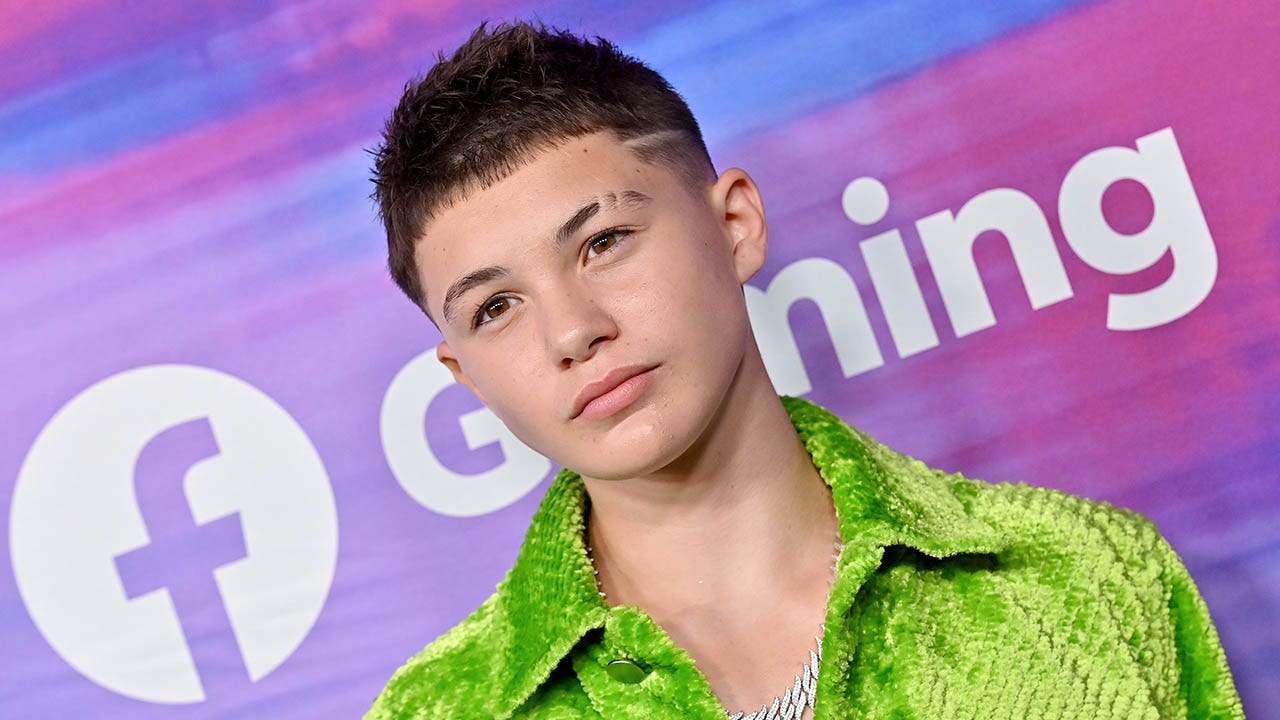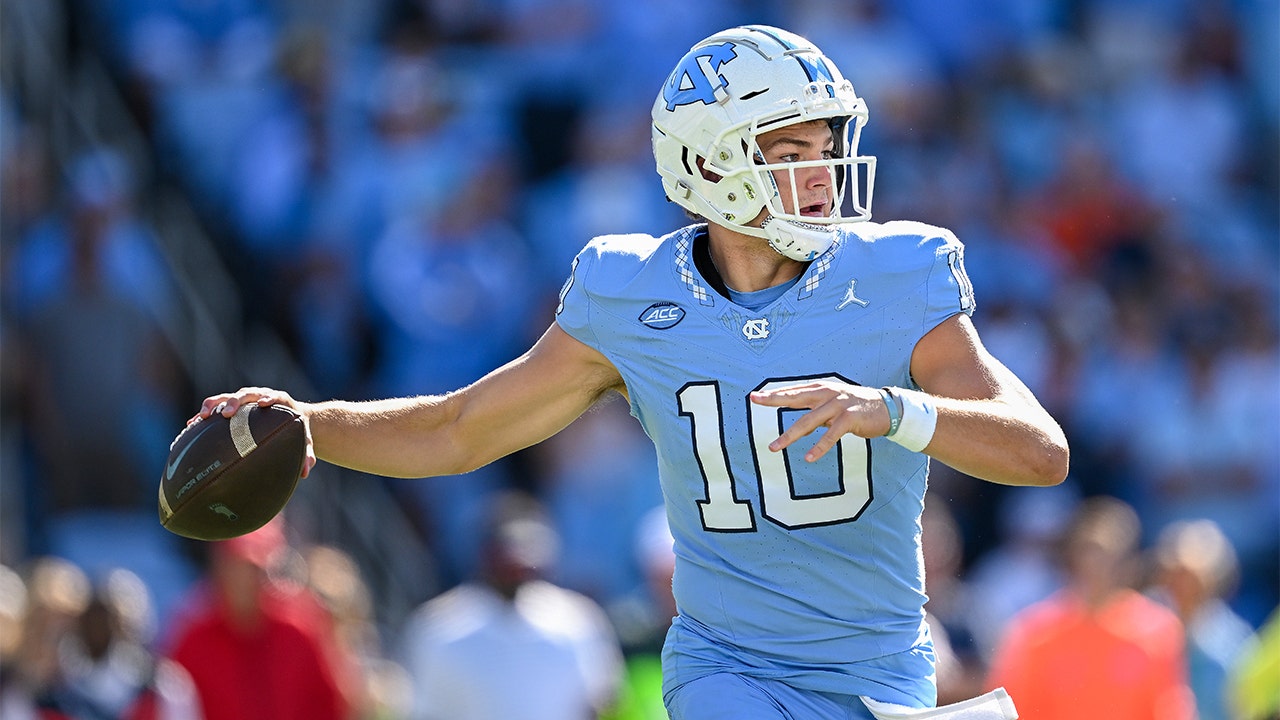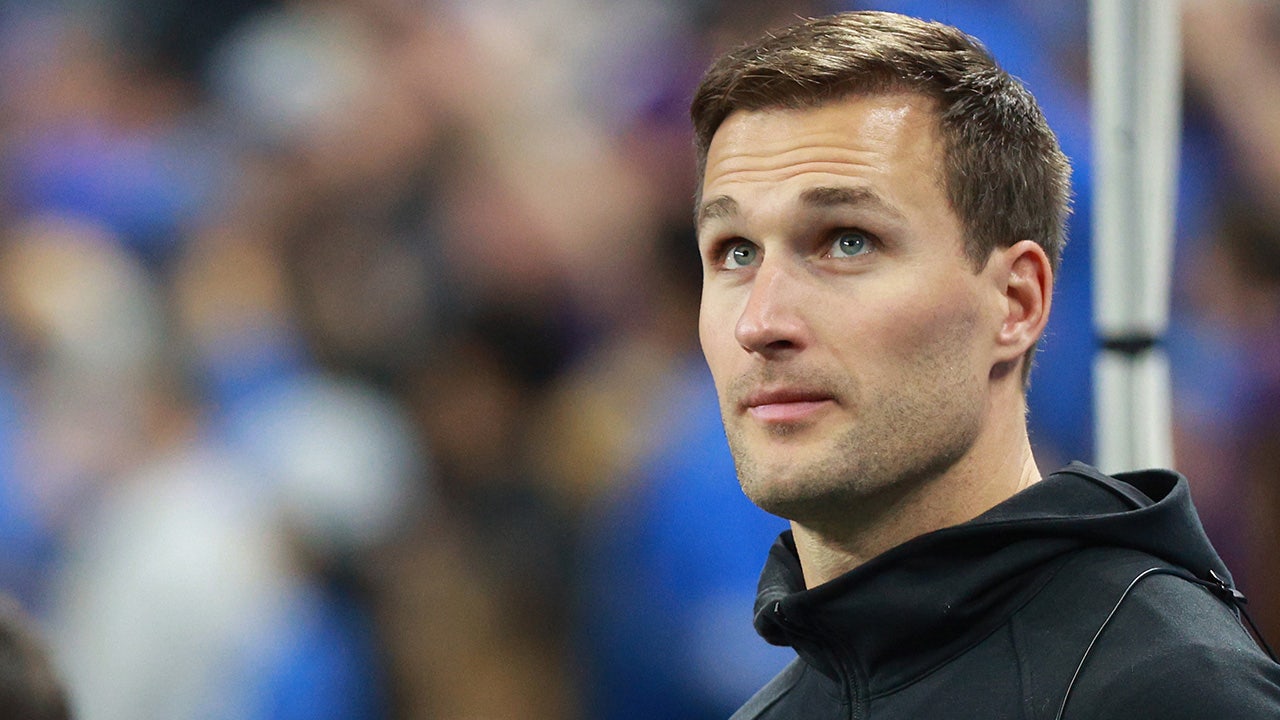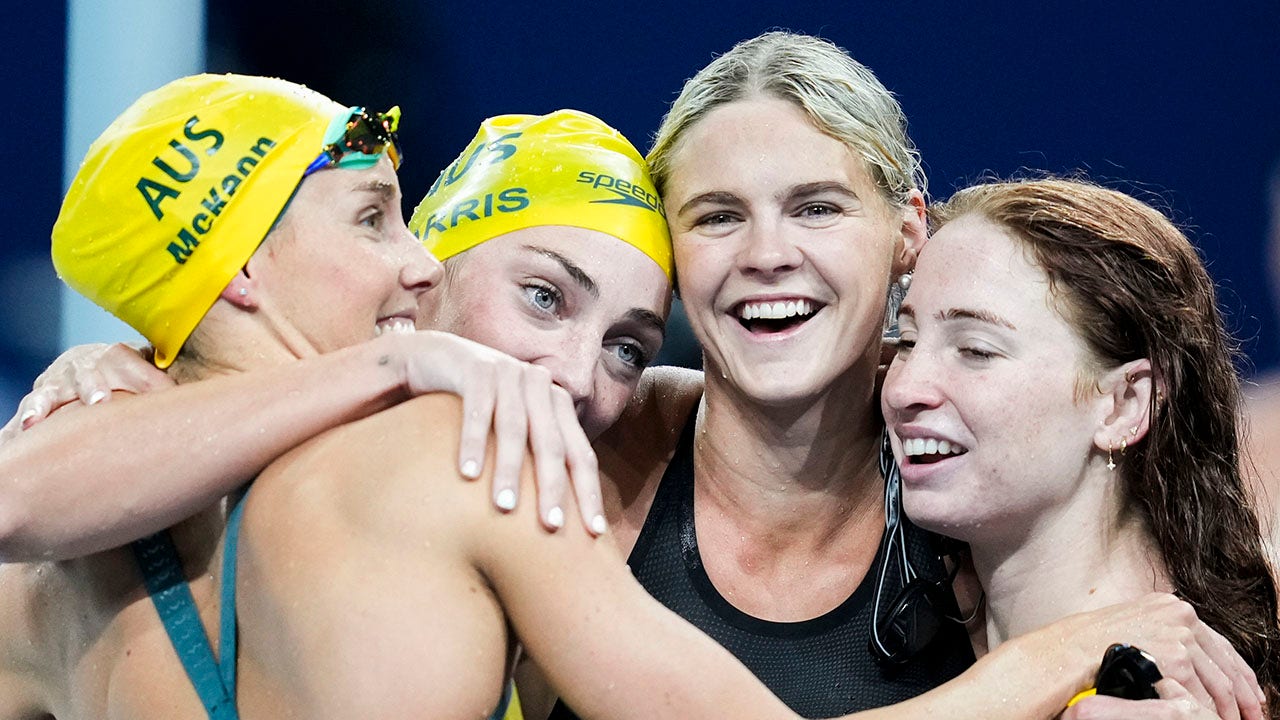A mountain rises above sandy red dirt not far from Jim McMahon’s home in Arizona. There are saguaros, jagged rocks, maybe some rattlers. But no trail.
As he drives by, McMahon tells his friend, “I can’t wait to climb that.”
The idea would be ambitious for any 64-year-old, let alone for one who recently came close to losing his right leg.
At some point during a 15-year NFL playing career — he’s not sure when — McMahon broke his right ankle. Doctors kept telling him he didn’t. By 2021, the ankle bone had grown — the size of two golf balls, he says — and McMahon could barely walk. About two and a half years ago, the bone was shaved and spurs removed. The doctors said the surgery was a success.
They always say that.
Four days later, McMahon felt a burning sensation. Blood seeped from an area on his leg far from his incision. His ankle was badly infected. Emergency surgery followed. And another emergency surgery.
“My foot literally exploded,” he says.
It looked like a chunk of flesh and muscle had been scooped from the front of his ankle. The open wound was about the size of a baseball and the colors of pizza.
McMahon was told if the infection reached his knee, his leg would be lost. As it crept up his leg — closer, closer, closer — he was as brash and irreverent as always.
“I’d be a sexy son of a bitch with one of those new prosthetics,” he told Kevin Tennant, a close friend of 46 years. “The women would love me.”
Over two and a half years, he had six skin grafts, the last in November. All the while, amputation remained a possibility.
He couldn’t move his ankle for seven months. The joint calcified. His Achilles tendon shrunk. He couldn’t point his toes up or down.
McMahon recently started seeing Chicago chiropractor Pete Petrovas, who has used electronic stimulation, ultrasound, acupuncture and manipulation to restore function in the joint.
Finally, there is movement. Finally, mercy.
He wears a brace on his ankle and walks with a cane. But somehow, Jim McMahon has made another improbable comeback.
McMahon’s first comeback happened early in the game of life.
At 6, he tried to untie a knotted shoelace with a fork. It slipped, puncturing his retina. Frightened, he waited six hours before telling his parents. After surgery, he was strapped down in his bed for a week so he wouldn’t scratch his eye.
Not long after he was untethered, McMahon played Wiffle ball in the hospital hallway and blasted a ball out of a window. Then he climbed out the window and down a few stories to retrieve it.
At 12, he was kicked off a baseball team when his coach, who also happened to be his father, caught him smoking cigarettes. He came back, though. In high school, McMahon played every position except catcher. At Brigham Young, he played outfield as a freshman.
But McMahon was a quarterback. Though his eye was light-sensitive and his vision was impaired, he could see the field better than almost anyone. At BYU, he set 75 NCAA records and led a comeback that was the football version of the Battle of Midway.
With less than three minutes remaining in the 1980 Holiday Bowl, the Cougars trailed Southern Methodist 45-25. When fans headed for the parking lots at San Diego’s Jack Murphy Stadium, McMahon yelled at them, warning them the game was not over. Then he led two touchdown drives to get BYU within six. With the ball on the SMU 41, the Cougars had one more play. McMahon dropped back to the BYU 45 and put up a Hail Mary that landed in the hands of Clay Brown in the end zone. The extra point with no time remaining gave the Cougars a victory in a game now known as “The Miracle Bowl.”
On this day in 1980, Jim McMahon led BYU to 3 TDs in the final 2:33 to beat SMU’s ‘Pony Express’ in the Holiday Bowl. pic.twitter.com/l7nSkdrkxM
— Yahoo Sports (@YahooSports) December 19, 2016
The Bears chose him with the fifth pick of the 1982 draft and two years later, McMahon made a comeback that left doctors astounded.
McMahon, who played as if he were wearing a medieval suit of armor, ran for a first down against the Raiders, then kept running instead of sliding as two defenders approached. Then defensive tackle Bill Pickel put his helmet into McMahon’s lower back. McMahon stayed in the game but didn’t have the breath to keep calling plays. He was taken to the locker room, where his urine was the color of Concord grape juice.
At the hospital, he learned his kidney was torn in two places, with one part completely detached. He bled for three days and was hospitalized for 10. After a transfusion, he was told he needed surgery to remove the kidney. Knowing he couldn’t play football with one kidney, McMahon objected. He says he could feel it healing and asked doctors for one more night. By the morning, he says, it was reattached.
“The big man upstairs knew the Bears couldn’t ever win s— if I wasn’t there, so he gave me another chance,” McMahon says. “He’s the only one who could have done what happened to my kidney. They just don’t grow back that fast.”
The following season, McMahon was not expected to play in a Thursday night game against the Vikings because of a back injury and leg infection that had him in traction earlier in the week. But the Bears trailed by eight in the third quarter and McMahon badgered coach Mike Ditka until Ditka relented.
On McMahon’s first play, Ditka called a screen pass, but the Vikings blitzed, so McMahon heaved one deep — a 70-yard touchdown to Willie Gault. His next pass was a 25-yard score to Dennis McKinnon. And his seventh was a 43-yard touchdown to McKinnon.
“All I remember is I almost fell on my face because I had so many muscle relaxants and painkillers in me,” McMahon says of the 33-24 victory. “I was barely able to stand up.”
At the end of that season, McMahon led the Bears to their only Super Bowl victory — after coming back from a rear-end bruise that was so sore he could barely sit.
Through 11 weeks of football in 1986, the Bears appeared well-positioned to repeat as champions. Then Packers defensive tackle Charles Martin changed the trajectory of their season — and McMahon’s life.
McMahon was walking away from the play after throwing a second-quarter interception when Martin grabbed him from behind and slammed him to AstroTurf, which might as well have been concrete. Martin, whom they called “Too Mean,” left McMahon there like roadkill.
A concussion and neck and shoulder injuries meant the end of his season, but not the end of his football comebacks.

Never one to shy away from the limelight, “the Punky QB” was the center of attention at Super Bowl XX media day in New Orleans. (Jonathan Daniel / Getty Images)
The Bears gave up on him. He came back with the Chargers. The Chargers cut him. He came back with the Eagles. He was supposed to sit out a 1991 game against the Browns because of a broken elbow and torn tendon. McMahon could barely move his arm, but 45 minutes before the game, it was decided he would play. His second pass was a pick-six, and the Eagles trailed 23-0 by the second quarter. Then McMahon threw three touchdown passes, including one with 5:19 left that gave the Eagles a 32-30 win.
McMahon played for four more teams. His final game, as a 37-year-old with the Packers, came as Brett Favre’s backup in a Super Bowl XXXI victory. He retired with a .691 winning percentage, eighth highest of the modern era. Of the players who rank ahead of him, three are in the Pro Football Hall of Fame (Roger Staubach, Joe Montana and Peyton Manning), one will be soon (Tom Brady) and two are active (Patrick Mahomes and Lamar Jackson). The other is Daryle Lamonica.
He didn’t throw passes as pretty as Dan Marino’s or John Elway’s, he had a better winning percentage than either. McMahon didn’t play in the high-flying offense Dan Fouts did, but he has two more Super Bowl rings.
He didn’t have the athleticism of Steve Young, but Young credited McMahon with teaching him how to pass when they were teammates at BYU.
He didn’t benefit from the genius coach and GOAT wide receiver that Joe Montana did, but he had a 4-1 record against him in head-to-head starts. McMahon’s only loss was in the NFC Championship Game in 1989, when his injured knee never gave him a chance.
A 14-year-old McMahon was hanging out with his baseball teammates when one of his friend’s older brothers “tossed us a bone.” That was the first time he smoked a joint. He kept smoking as a teen and throughout his playing career.
These days, indica and OG strains are his favorites, but he likes trying different ones. Every few hours, McMahon lights up either with a bowl or a dogwalker.
“It makes me not think about the pain,” he says.
He has had 25 surgeries: seven right knee, six ankle, five left knee, four right shoulder, two left shoulder and one eye. When he reaches to shake a hand, he winces. If he remembers, he pulls golf clubs from his bag with his left hand.
McMahon doesn’t work out much because he can’t lift his arm sideways. His right shoulder has been a problem since the first game of the 1986 season. After shoulder surgery that year, he says he was supposed to sit out two seasons, but he came back in 10 months. Now McMahon probably needs a replacement.
And then there is his head.
McMahon was a teammate of Andre Waters in Philadelphia and Dave Duerson in Chicago. When each killed himself, McMahon was stunned. He wondered what could make them feel so despondent. In 2012, he was enlightened.
“I started feeling the same things about a month or two after Duerson (died),” he says. “Then I understood.”
McMahon experienced debilitating headaches — it was like an ice pick in his skull. For months, he mostly stayed in bed with the shades down.
“If I had a gun, I would have blown my f—— head off,” he says. “It hurt that bad. I spent weeks at a time thinking, ‘What are you going to do?’ But I didn’t want to do that to my kids, my folks and my family.”
McMahon found relief through Scott Rosa, a New York chiropractor who traced some of the problems to old neck injuries. He sees Rosa a few times a year, whenever headaches worsen.
McMahon’s wit remains sharp, but his memory has dulled. He can relay 30-year-old reminiscences and nail every detail, but ask him what he did this morning and he might struggle to answer. He forgets appointments even though he enters them in his calendar. He occasionally loses his train of thought in mid-conversation.
He was one of the plaintiffs in the concussion lawsuit against the NFL. A settlement was agreed upon in 2015 and the NFL has paid nearly $1.2 billion to former players and their families, but McMahon has not collected.
“They said I wasn’t impaired enough, that I don’t have full-blown dementia,” he says. “They want you to die before they admit there was something wrong with you.”
He was one of several players who sued the league for illegally dispensing narcotics and other drugs without regard for long-term health. At one point he says he was taking 100 Percocet pills monthly, but the medication made it difficult to sleep.
At least he has marijuana.
Along with former NFL players Kyle Turley, Eben Britton and Ricky Williams, McMahon owns Revenant, a cannabis business. He and Williams recently visited Capitol Hill to lobby for more lenient federal marijuana regulations.
A look at McMahon’s busy travel itinerary is enough to make him want to take a toke. Much of his travel involves golf, where he somehow manages to crush his drives despite playing one-legged, spreading his legs as far as possible and putting all his weight on his left foot.
“I told him he plays as good with one foot as he did two,” his son Sean says.
An excellent golfer, Sean tries to give his father pointers but says Jim doesn’t take to coaching very well. Ditka could have told him that.
When he’s on a course, McMahon almost always has a Coors Light in his hand. Time has diminished neither his thirst nor his legendary capacity.
“Me and Horne (former teammate Keith Van Horne) did a good job at a bar the other night,” he says, pausing to spit tobacco in a cup. “It was probably funny watching him and me trying to walk out of this place.”
Drinks in the Chicago area are almost always on the house — or on the guy at the end of the bar wanting to take a selfie. A fan paid his lunch tab at a Greek restaurant the other day. They love him not just because he helped win a Lombardi Trophy but because of how he did it — with rebelliousness and recklessness. An icon in the lineage of Broadway Joe Namath and Kenny “The Snake” Stabler, McMahon was who football fans wanted to be.
He still is. Kind of.

These days, “Papa Jim” enjoys his time with his six grandchildren. (Photos courtesy of Sean McMahon)
Sean says when his father is with his friends, he acts no differently than he did 30 years ago. When Tennant is around, they golf and play cards, backgammon and dominoes for hours on end, insulting one another and laughing like they have for 46 years.
“I kick his a– every time, or almost every time,” Tennant says.
“He’s full of s— most of the time,” McMahon says.
Where gel-spiked hair once was, there is now a shaved scalp. The sturdy chin wears a white goatee. With his still-light-sensitive eyes obscured by blue-lens sunglasses, he looks more like a villain from a Marvel movie than a stereotypical grandfather. But to Maverick, 7, Macy, 6, Gibson, 5, Ryder, 5, Walker, 3 and Brooks, 1, he is “Papa Jim.”
McMahon downplays the significance of being a grandfather. Then he shows off videos of the kids.
Papa Jim gets on the floor to play cars with Walker. He takes Macy to her tennis lesson. Maverick and Ryder bruise him up with their toy nunchucks and swords. He plays catch with the kids but throws left-handed or underhanded because the arm that launched 2,573 NFL passes can no longer make a gentle overhand toss without stabbing pain.
Divorced for 15 years and unattached, McMahon appreciates time with his grandkids, four children and 88-year-old parents, Jim Sr. and Roberta. He didn’t always get along with his mother and father during his NFL days, but time heals the wounds it can.
Some of his injuries during football made him feel like crying, but he always held back tears. He didn’t want to show weakness. That has changed.
“My physical therapy makes me cry every time,” he says. “I even catch myself tearing up while watching TV commercials. I asked my doc, ‘Am I going f—— crazy?’ He told me it’s part of maturing.”
So, McMahon has matured?
“It’s awfully bold of you to assume I have,” he says with that familiar grin. Then he pauses.
“I mean, you’re getting closer to death, so you’re trying to put your life in perspective,” he says. “You’re trying to finish out the last few years and make them good so you don’t have to wait too long in line when you get up there, if that’s the way I’m headed.”
McMahon is headed somewhere else now, hobbling away to meet a former teammate. He will drink too many beers, stay out too late and tell stories his grandchildren probably should not hear. And when tomorrow dawns, Jim McMahon, deep in the game of life, will reach for his cane, light a bowl and make another comeback.
(Illustration: Dan Goldfarb / The Athletic; photos courtesy of Sean McMahon; Peter Read Miller, Focus on Sport / Getty Images; Paul Spinelli / Associated Press)

